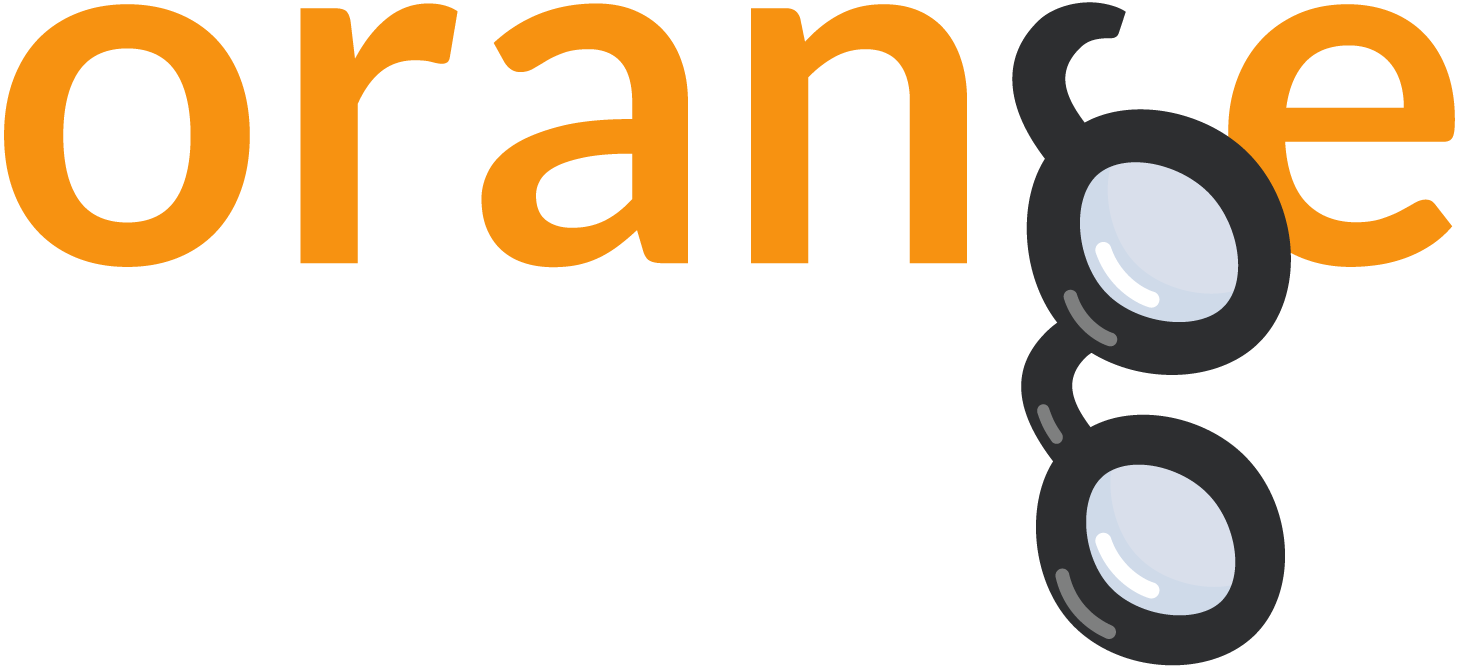Orange Blog
By: AJDA, Jul 24, 2015
Visualizing Misclassifications
In data mining classification is one of the key methods for making predictions and gaining important information from our data. We would, for example, use classification for predicting which patients are likely to have the disease based on a given set of symptoms. In Orange an easy way to classify your data is to select several classification widgets (e.g. Naive Bayes, Classification Tree and Linear Regression), compare the prediction quality of each learner with Test Learners and Confusion Matrix and then use the best performing classifier on a new data set for classification.
By: AJDA, Jul 10, 2015
Learn with Paint Data
Paint Data widget might initially look like a kids’ game, but in combination with other Orange widgets it becomes a very simple and useful tool for conveying statistical concepts, such as k-means, hierarchical clustering and prediction models (like SVM, logistical regression, etc.). The widget enables you to draw your data on a 2-D plane. You can name the x and y axes, select the number of classes (which are represented by different colors) and then position the points on a graph.
By: AJDA, Jul 3, 2015
Support vectors output in SVM widget
Did you know that the widget for support vector machines (SVM) classifier can output support vectors? And that you can visualise these in any other Orange widget? In the context of all other data sets, this could provide some extra insight into how this popular classification algorithm works and what it actually does. Ideally, that is, in the case of linear seperability, support vector machines (SVM) find a **hyperplane with the largest margin **to any data instance.
By: BIOLAB, Apr 30, 2012
Orange GSoC: Multi-Target Learning for Orange
Orange already supports multi-target classification, but the current implementation of clustering trees is written in Python. One of the five projects Orange has chosen at this year’s Google Summer of Code is the implementation of clustering trees in C. The goal of my project is to speed up the building time of clustering trees and lower their spatial complexity, especially when used in random forests. Implementation will be based on Orange’s SimpleTreeLearner and will be integrated with Orange 3.
By: BIOLAB, Jan 9, 2012
Multi-label classification (and Multi-target prediction) in Orange
The last summer, student Wencan Luo participated in Google Summer of Code to implement Multi-label Classification in Orange. He provided a framework, implemented a few algorithms and some prototype widgets. His work has been “hidden” in our repositories for too long; finally, we have merged part of his code into Orange (widgets are not there yet …) and added a more general support for multi-target prediction. You can load multi-label tab-delimited data (e.
By: BIOLAB, Sep 2, 2011
GSoC Review: Multi-label Classification Implementation
Traditional single-label classification is concerned with learning from a set of examples that are associated with a single label l from a set of disjoint labels L, |L| > 1. If |L| = 2, then the learning problem is called a binary classification problem, while if |L| > 2, then it is called a multi-class classification problem (Tsoumakas & Katakis, 2007). Multi-label classification methods are increasingly used by many applications, such as textual data classification, protein function classification, music categorization and semantic scene classification.
By: BIOLAB, Aug 24, 2011
Faster classification and regression trees
SimpleTreeLearner is an implementation of classification and regression trees that sacrifices flexibility for speed. A benchmark on 42 different datasets reveals that SimpleTreeLearner is 11 times faster than the original TreeLearner. The motivation behind developing a new tree induction algorithm from scratch was to speed up the construction of random forests, but you can also use it as a standalone learner. SimpleTreeLearner uses gain ratio for classification and MSE for regression and can handle unknown values.
